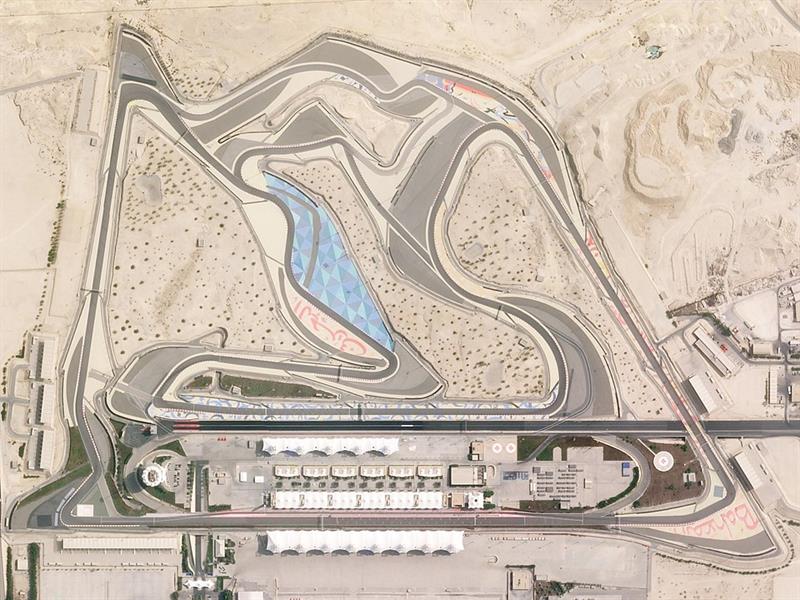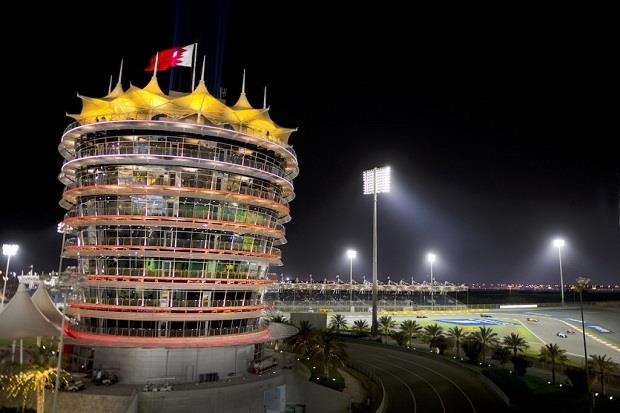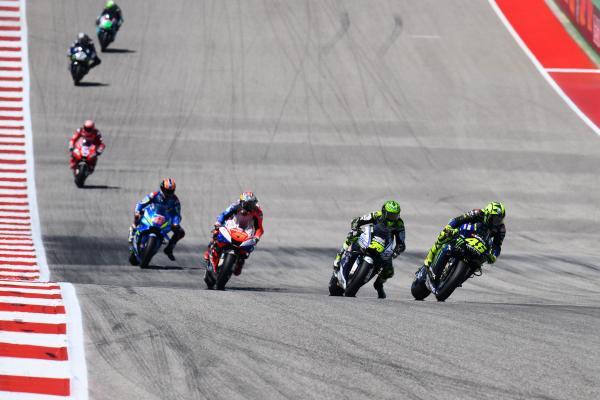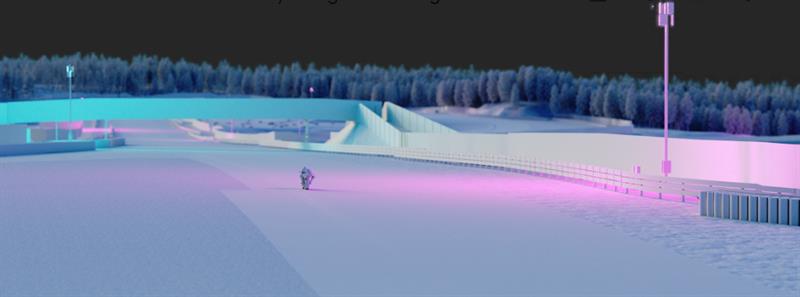Critical communications technology is currently deployed across a variety of ‘vertical’ environments, ranging from public safety to utilities, industry and mining.
Needless to say, CCT attempts to cover all these sectors in our ongoing mission to provide readers with the very latest case studies from around the world.
One area that doesn’t necessarily get the attention it probably deserves, however, is large-scale events, and in particular those involving sport.
There could be any number of reasons for this, not least that there is, by definition, something seemingly frivolous about locations that are places of enjoyment as much as they are places of work. It is also probably fair to say that there is an (often perfectly reasonable) perceived lack of peril when it comes to these environments, at least when compared with an airport runway or a crime scene.
That being the case, in this issue we are redressing the balance by focussing on motor racing, a sport where efficiently designed and deployed critical communications are absolutely integral to the safety of both participants and spectators.
In the first instance, the focus will be on Airbus’s ongoing work providing TETRA to the Bahrain Grand Prix (track pictured below), via a system that has been constantly evolving since it was first deployed in 2005.

Next, we look at Nokia’s roll-out of 5G at the KymiRing in Finland, a project which offers major insight not only into the direction of the technology but also the future of the sport itself.
Continual progress
Taking place at the end of March, this year’s Bahrain Grand Prix marked the start of the 2021 Formula One Season. The venue for it was the 70,000-spectator-capacity Bahrain International Circuit in Sakhir in the west of the country. Airbus provided narrowband communications technology for the race, leveraging – as in previous years – the country’s pre-existing TETRA infrastructure, as owned by the government.

The F1 deployment also included extra network capacity to the site itself, as well as the provision of handsets, in order to, according to a statement released at the time, “secure the safety of the competitors and everyone on the premises”.
Going into greater detail about the roll-out and its history, Airbus head of Middle East, Africa and Asia Pacific, Selim Bouri, says: “We’ve been providing TETRA to the Bahrain International Circuit Organisation almost from the beginning, connected to the core network already rolled out for local authorities. That enables communications at the circuit to integrate with external security and emergency services organisations, which is obviously vital.
“In terms of the Grand Prix, we provide additional capacity and infrastructure based on specific race-day needs, for instance in relation to security, and the organisation of the event itself. Those using the network include marshals and the race organising committee, as well as dispatchers located in an onsite control room.”
That extra capacity is provided by base stations located across the 5,412-metre circuit (the number of which Bouri cannot disclose for security reasons). The system operates on the 380-410MHz frequency, corresponding, naturally enough, with the spectrum set aside for Bahrain’s emergency services. User equipment includes the company’s THR880i TETRA handsets, as carried by the aforementioned race personnel.
Dispatch is carried out via the company’s Tactilon suite, which – in the words of the Airbus website – “combines the capabilities of TETRA/Tetrapol networks and [as yet unleveraged] broadband communications”.
Describing use of the network on race day, Bouri continues: “If there’s an issue in one part of the circuit, a marshal can immediately activate a dedicated talk group in order to connect with other marshals located in that area, as well as security and emergency services officials. With one click, everyone who needs to be on a particular call will be involved.
“Obviously, the Formula One teams have their own systems to communicate between themselves as well. Those are all based on different technologies, operating in other frequencies, so there’s never any issue with interference with the TETRA system. Ours is the only onsite network classified as mission critical, which guarantees reliability and redundancy in terms of the core system, base stations and so on.”
As mentioned, Airbus SLC has been providing TETRA-based communications to the Bahrain Grand Prix since the middle of the 2000s.

Throughout that time, at least according to Bouri, the network has been constantly evolving, culminating this year with the creation of ‘virtual’ talk groups, leveraging the Ministry of Health’s parallel TETRA solution.
This was necessary, with a tedious inevitability, to help maintain onsite safety measures prompted by COVID-19. These included additional screening requirements, as well as potential isolation and evacuation of those suspected of having the virus.
“There were also multiple additional logistical and tactical procedures associated with COVID-19,” says Bouri. “The F1 event had a specific sanitary ‘bubble’, which increased the requirements of communication, control and co-ordination.”
The ability to create what might be regarded as ‘external’ talk groups has clearly added a vital element to the system, enabling it to become increasingly agile and adaptive.
According to Bouri, however, there is also likely going to be further evolution on the way, with the increasing integration of broadband now integral to the organising committee’s plans going into the future.
“We anticipate that TETRA will continue to be the most reliable solution for voice, for at least the next 10 years"
Discussing this, he says: “The handsets currently being used at the circuit are dedicated TETRA devices. However, going into the future, we’re looking at bringing additional capacity to the network, moving from purely narrowband to a hybrid approach.
“We anticipate that TETRA will continue to be the most reliable solution for voice, for at least the next 10 years. At the same time, by putting in a 4G layer over the top, we can include other functionalities such as real-time video monitoring and additional sensor information.
“That would also give us the opportunity to introduce our next generation of handsets such as the Dabat, which is both TETRA and LTE. Use of the Tactilon Agnet, meanwhile, will provide a secure virtual gateway for smartphones to link into the communications network. That would give the opportunity for volunteers to perhaps become involved.
“In terms of the type of broadband network we plan to leverage – private, commercial and so on – that depends entirely on the potential users, as well as in-country regulations and priorities.
Generally, the first implementations of hybrid start with private TETRA/ commercial MNO via a roaming agreement. However, the option of a private dedicated broadband network may also be relevant, either as a second step or if specific additional requirements arise.”
>Race for the prize
Bouri says TETRA is likely to remain the most reliable solution for voice for the foreseeable future, and so it is. It is also obvious, however, that, at the Bahrain International Circuit alongside everywhere else, broadband is coming.
Further, and even more conclusive, proof of this can be found in the work currently being carried out by Nokia and private wireless network provider EDZCOM, which have been contracted to deploy private 5G to the 4.5km KymiRing in Finland.
Situated in the southern village of Kausala, the site includes the main racetrack as well as driver training facilities located next door, and space for what a well-known online encyclopaedia calls “fairs, festivals and other mass events”.
According to a statement released earlier this year, the new network will support both the “testing environment” as well as enabling “unprecedented televising techniques for motorsport”.

At the same time, the increased bandwidth and drastically reduced latency provided by 5G will likely also revolutionise the actual racing itself.
The CEO of KymiRing is Markku Pietilä. Discussing the reason for commissioning the network, and the impact he believes it will make, he says: “It’s clear that a significant part of what we do going forward will have a digital element, which is the same in every facet of the events industry. In terms of the sport itself, if we look forward five years, the races are probably going to look completely different from the way they do now.”
For Pietilä, the primary driver (no pun intended) for the installation of the new network revolves around expenditure and income. As he says, for instance, he had already installed fibre as early as possible (“in the starting phase”) because of the expense of leaving it until after the circuit was built.
"If we look forward five years, the races are probably going to look completely different from the way they do now"
At the same time, he is also confident of finding ways of successfully monetising the new network, particularly in relation to the televising techniques mentioned above. This could include, for instance, enabling fans to watch an entire race in real time from the point of view of their favourite driver.
He is also excited about the potential for ‘interactive’ advertising with content catered specifically for each individual viewer. As intriguing as this is, however, probably more compelling for CCT is the likely impact that the new technology will have on the racing piece, for instance from a safety perspective. At the same time, 5G will also likely have profound implications for the car manufacturers that use the KymiRing as a testing ground.
Going into greater detail about this, Pietilä says: “We’ve been consulting with Aki Ajo, who is the founder of Grand Prix motorcycle racing team Ajo Motorsport. He is massively respected in the industry and believes that teams will undoubtedly find ways to exploit the 5G technology.

“One example of that is the potential use of onboard cameras, which will be able to send uninterrupted information back to the teams at all times. They will also be able to analyse mechanical – and biometric – data, all of which will again be available in real time. We can only imagine what they’re going to be able to do with all this information, provided by what is essentially an unlimited number of sensors.”
He continues: “It’s the same principle with the testing environment, with commercial cars now providing their own data from a variety of onboard sensors. Again, car manufacturers have to receive testing information in real time, with a very high level of security, which is one of the reasons that we’ve decided to opt for a private network.”
This last comment brings us neatly onto the technology/infrastructure itself which is being provided by Nokia alongside private wireless network specialist EDZCOM.
Describing the deployment, EDZCOM CTO and co-founder Kari Lehtinen says: “KymiRing is designed as a private network, which includes an on-premise core, radio access and enough spectrum to deliver the value proposition and use-cases. It’s been built to support both 4G and 5G, enabling potentially massive expansion once millimetre wave becomes available.
“The advantage of this kind of private network – other than the owner having complete control – is that you can add capacity very flexibly and quickly, for instance if you need to change the location of a camera. Depending on the size of the network and the required number of base stations, you can build something like this in a day and scale it up incredibly easily.
“We have a very good partnership with Nokia. They were willing to invest in us in the first instance, and also willing to let us test and try new things that are not necessarily in wider usage yet. We’ve been rolling out about 30 private networks, mostly in Finland, including deep mines, ports, airports, manufacturing.”

Going back to the variety of use-cases mentioned earlier, what is likely to be the priority in terms of how the network is used? Given the unique nature of the environment, meanwhile, what has been the situation in regard to spectrum?
“In terms of usage,” says Lehtinen, “uplink is critical. There’s going to be a huge amount of data coming from moving elements as well as from the track itself. That’s the case with a lot of private networks in any space where the technology is being deployed in order to gather information. The top speed of the circuit is 350KPH, and 5G can easily cope with the handover between the base stations.
“Spectrum was not an issue, because of our history as a company. We have spectrum in two bands which we acquired early on, almost by chance. Five years ago, comparatively small companies such as us were not necessarily even thinking about these kinds of roll-outs. Now there is an increasing need for these local, high-performance environments.”
Sporting event locations are increasingly at the cutting edge of critical communications deployment. With its need for safety and efficiency at all costs, the motorsport space is a perfect example of that.



